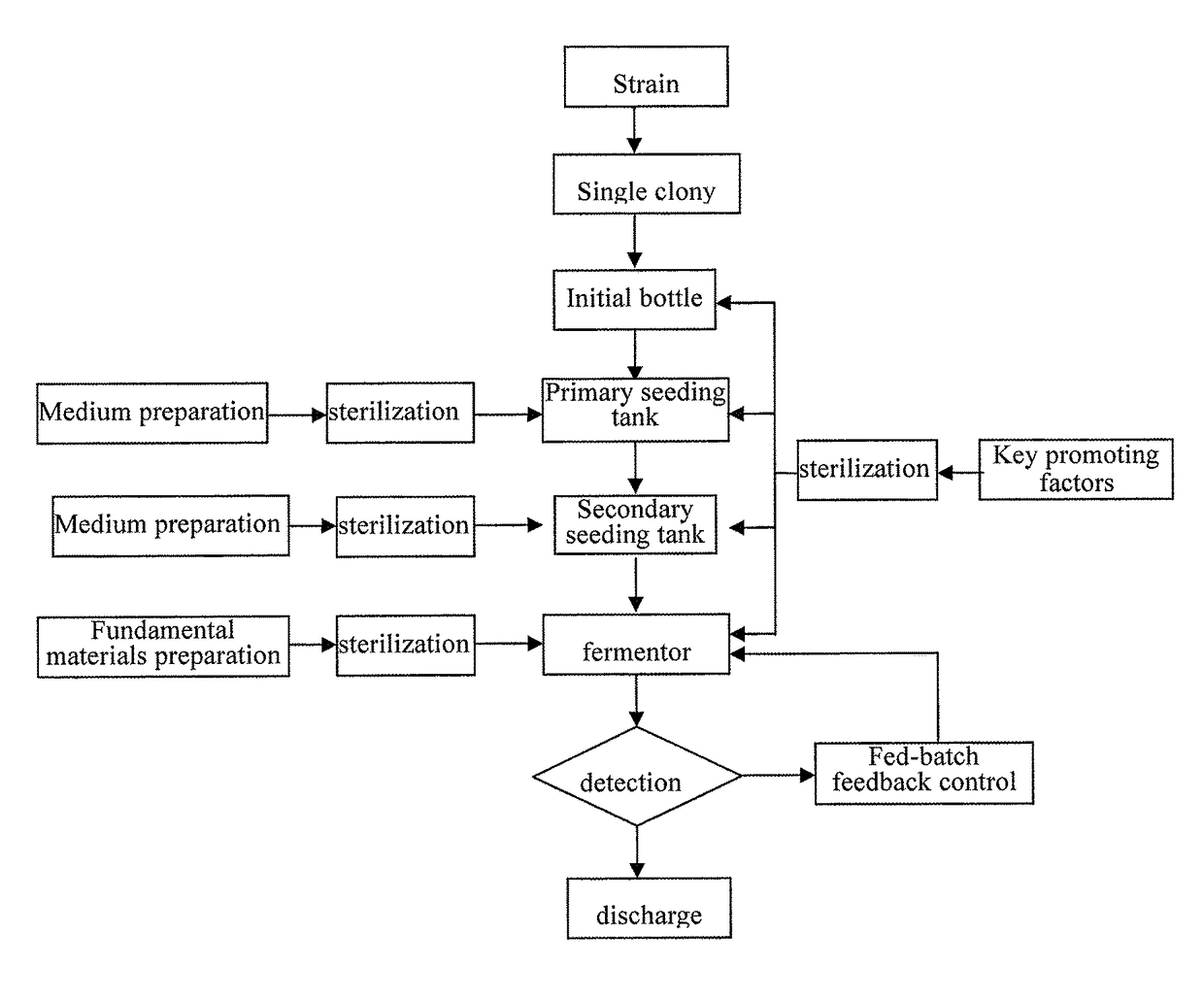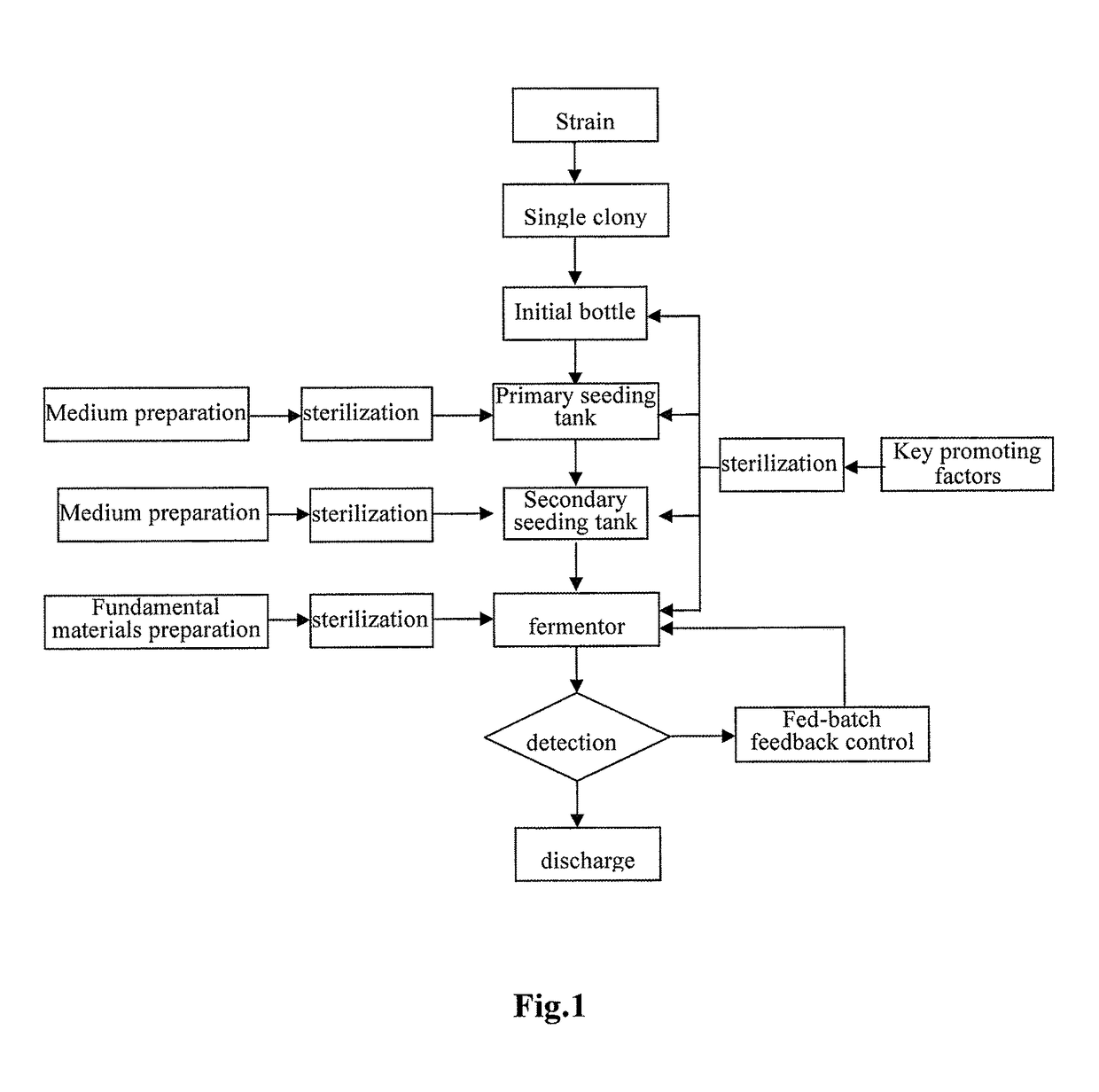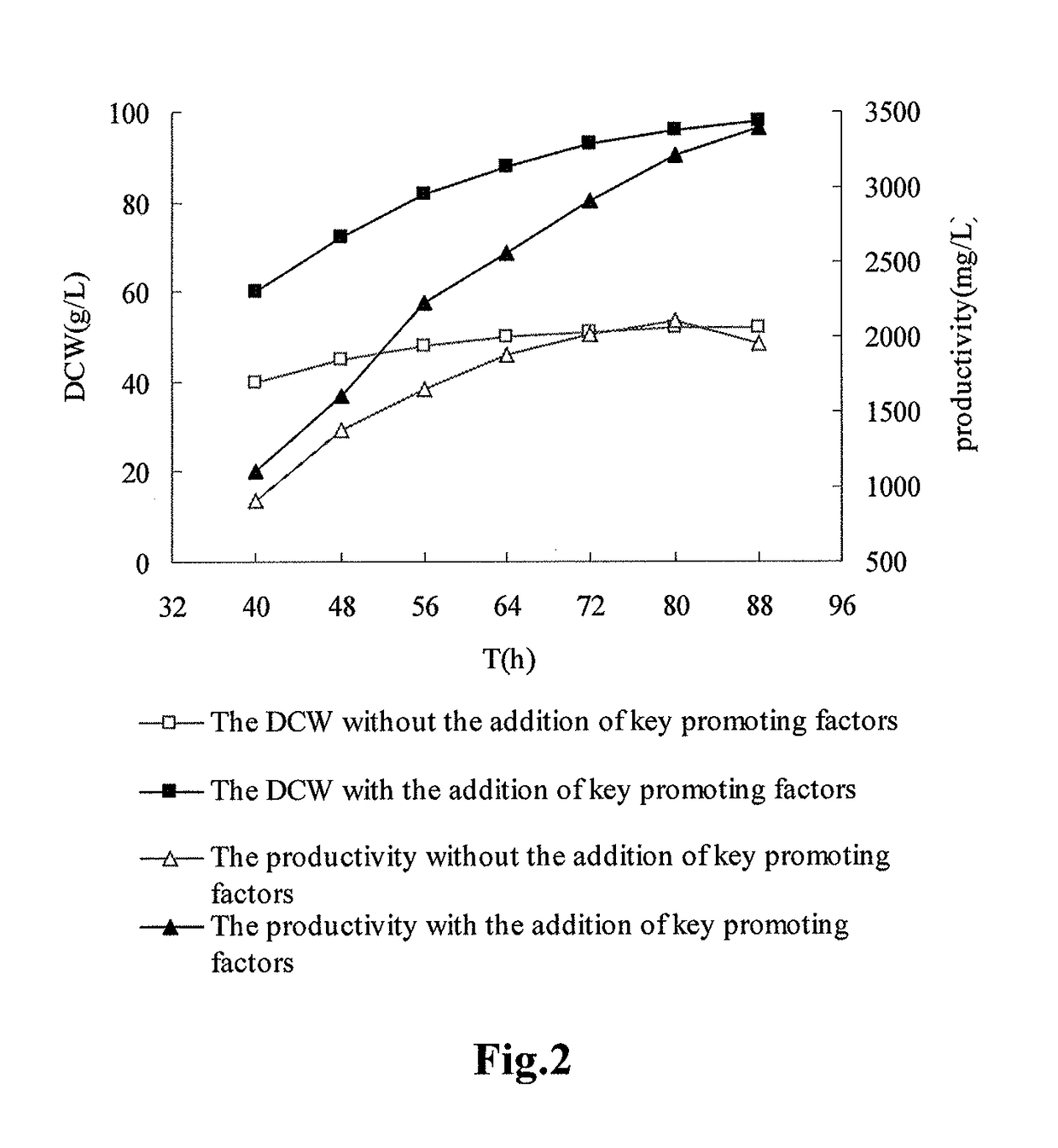Fermentation method for producing co-enzyme Q10
a coenzyme and coenzyme technology, applied in the field of fermentation engineering, can solve the problems of limited extraction methods from animal or plant tissues, low fermentation level, and unsuitable modern industrial production of chemical synthesis methods, and achieve the effects of increasing cell density, high cell density, and promoting thalli growth
- Summary
- Abstract
- Description
- Claims
- Application Information
AI Technical Summary
Benefits of technology
Problems solved by technology
Method used
Image
Examples
example 1
The Method for Determining the Content of Coenzyme Q10 in a Fermentation Liquor
[0049]The content of coenzyme Q10 in a fermentation liquor is determined by the method for determining coenzyme Q10 as described in Pharmacopoeia of People's Republic of China (the second edition, 2010).
[0050]In dark condition, 5 ml fermentation liquid cultures was drawn accurately and placed in a 50 ml volumetric flask. A drop of 6 mol / L HCl solution (about 0.1 ml), acetone (10 ml), 30% hydrogen peroxide (0.5 ml) were added, respectively, and the volumetric flask was slightly shaken. 30 ml absolute alcohol was added. The volumetric flask was subjected to ultrasound in an ultrasonic device for 30 s, and then the volumetric flask was taken out and absolute alcohol was added to the scale. The volumetric flask was subjected to ultrasonic extraction in an ultrasonic device for 45 min (the water temperature was controlled between 30° C. and 35° C.), and then was taken out and shaken up. The resultant solution ...
example 2
[0057]The Rhodobacter sphaeroides JDW-610 mutant strain was cultured in a plate at 30° C. for 4 days, grass green circular colony that grew well were picked out and put into a sterilized medium in an stock bottle, and then were cultured at 30° C., 300 rpm in a shaker for 25 h; the liquid cultures in the stock bottler was transferred into a sterilized primary seeding tank (charged with a volume of 0.7 m3), and cultured with agitation rate of 400 rpm, airflow rate of 1 vvm, temperature of 30° C., and pressure of 0.04 MPa for 38 h. When the thalli in the primary seeding liquor were in a homogeneous state and were rich in amount and the sterility was up to standard, all the liquor was transferred into a sterilized secondary seeding tank (charged with a volume of 7 m3) and was cultured with agitation rate of 200 rpm, airflow rate of 0.8 vvm, temperature of 30° C., and pressure of 0.04 MPa for 12 h. The composition of medium in the primary and secondary seeding tank is: 5 g glucose, 3 g y...
example 3
[0069]The Rhodobacter sphaeroides JDW-610 mutant strain was cultured in a plate at 30° C. for 4 days, green circular single colony that grew well were picked out and put into a sterilized medium in a stock bottle, and were cultured at 30° C., 300 rpm in a shaker for 25 h; the liquor cultures in the stock bottle was transferred into a sterilized seeding tank (charged with a volume of 7 L) and were cultured with agitation rate of 300 rpm, airflow rate of 0.8 vvm, temperature of 30° C. and pressure of 0.04 MPa for 20 h. The composition of medium in the seeding tank is: 5 g glucose, 3 g yeast powder, 4 g ammonia sulfate, 1 g aginomoto, 0.8 g corn steep liquor powder, 2 g magnesium sulfate, 1 g monopotassium phosphate, 2.4 g sodium chloride, 0.5 g ferrous sulfate, 0.1 g manganese sulfate, 0.005 g zinc sulfate, 5 g calcium carbonate, 1000 ml water, with pH 6.5, sterilized at 121° C. for 25 min. Prior to seeding, the sterilized key promoting factors were transferred into the medium in the ...
PUM
| Property | Measurement | Unit |
|---|---|---|
| flow rate | aaaaa | aaaaa |
| temperature | aaaaa | aaaaa |
| temperature | aaaaa | aaaaa |
Abstract
Description
Claims
Application Information
 Login to View More
Login to View More - R&D
- Intellectual Property
- Life Sciences
- Materials
- Tech Scout
- Unparalleled Data Quality
- Higher Quality Content
- 60% Fewer Hallucinations
Browse by: Latest US Patents, China's latest patents, Technical Efficacy Thesaurus, Application Domain, Technology Topic, Popular Technical Reports.
© 2025 PatSnap. All rights reserved.Legal|Privacy policy|Modern Slavery Act Transparency Statement|Sitemap|About US| Contact US: help@patsnap.com



